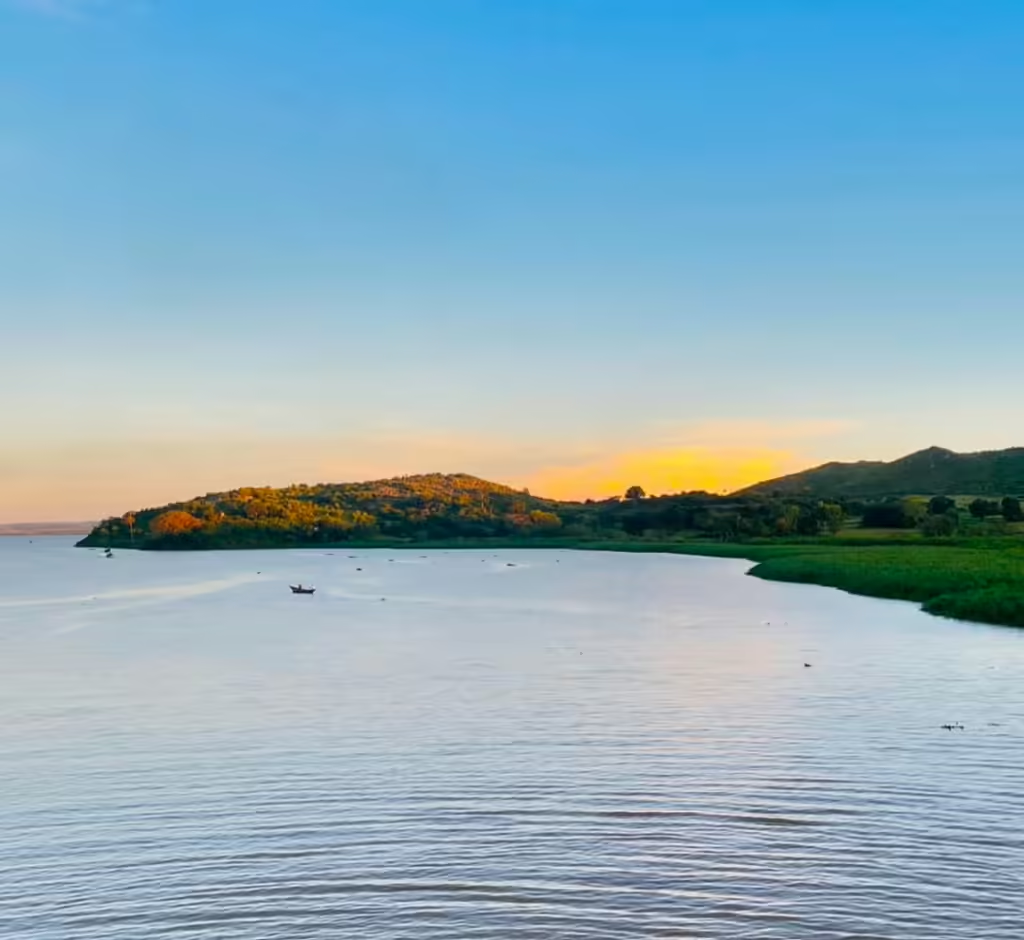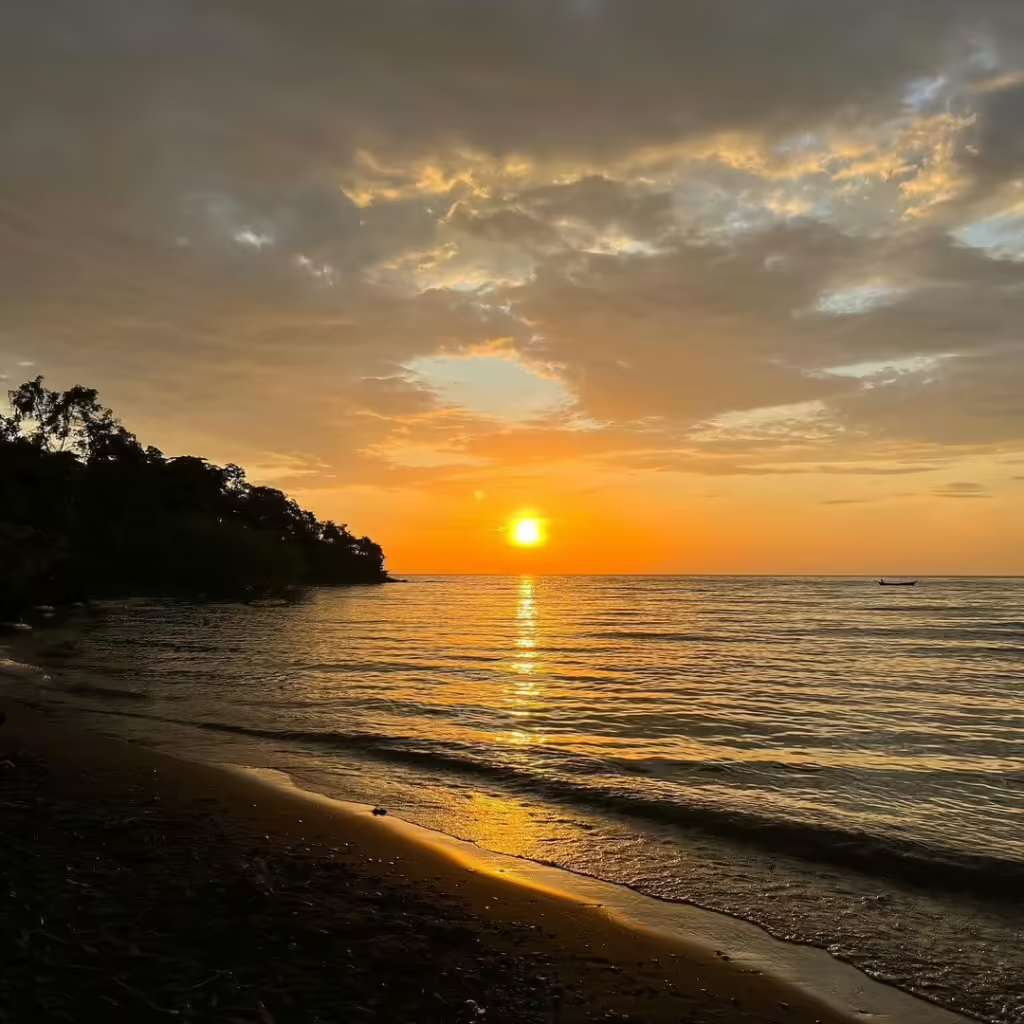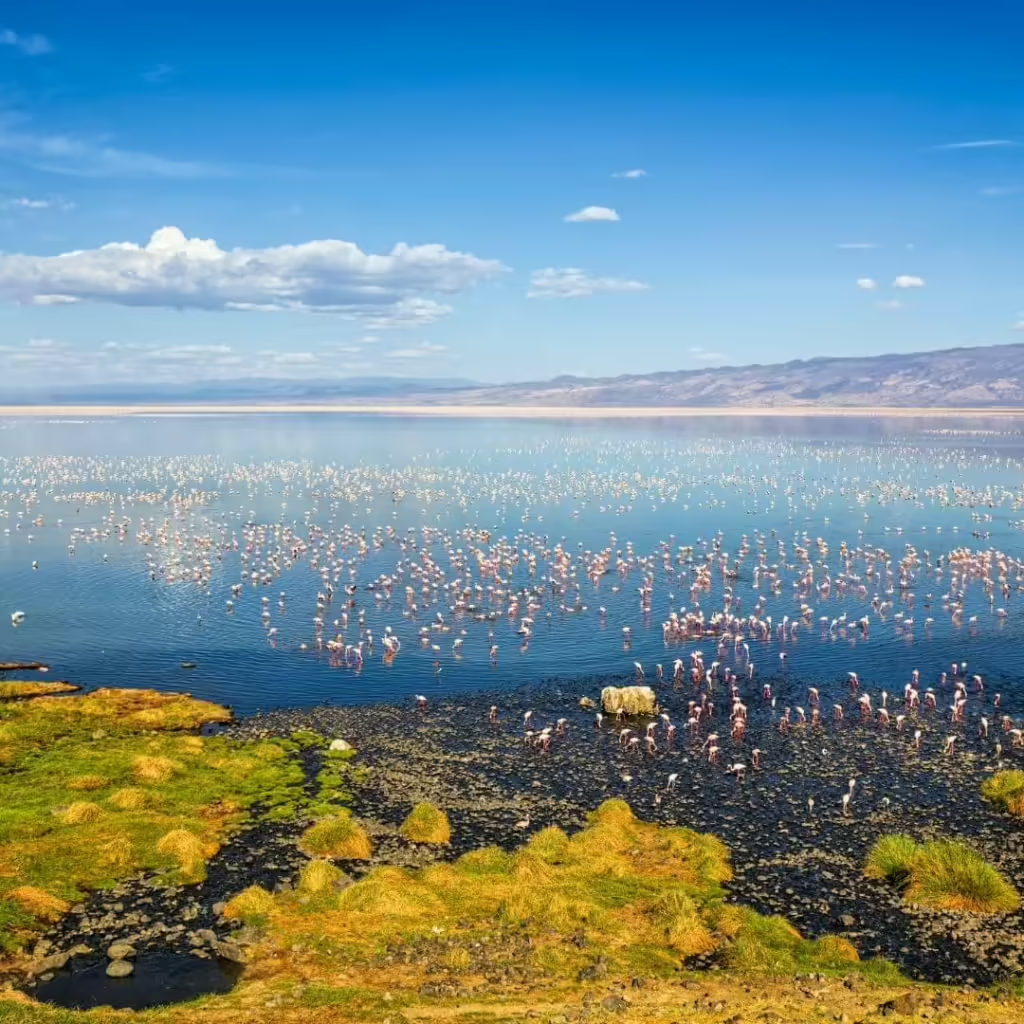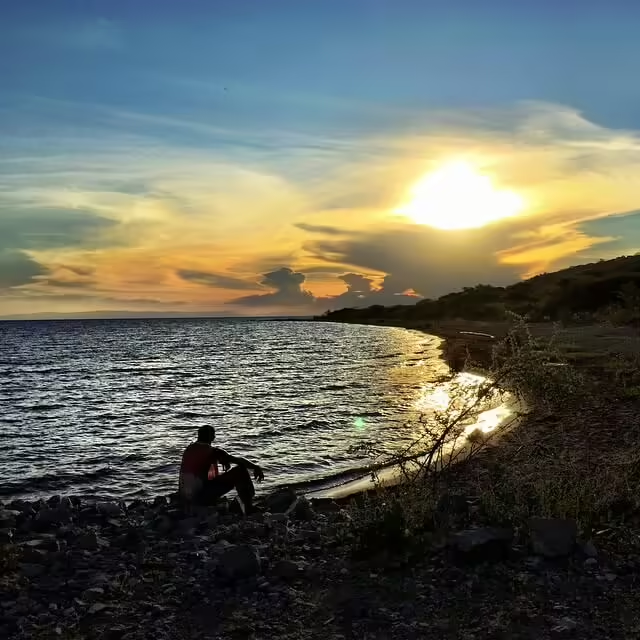
Best Lakes to Visit in Tanzania for an Immersive Experience
Tanzania, known for its breathtaking landscapes and rich biodiversity, boasts an impressive array of lakes that offer travelers unique opportunities for exploration and immersion. From the expansive shores of Lake Victoria to the volcanic landscapes surrounding Lake Natron, each of these lakes holds its own charm and allure.
These lakes not only offer beautiful views but also offer great opportunities for game viewing, birdwatching, canoeing, camping, fishing, diving, boat safari and much more. It is safe to say that Tanzania has some of the best lakes in the world and is a must-visit place for tourists and nature lovers.
Let’s explore the best lakes to visit in Tanzania and the immersive experiences they offer.
1. Lake Victoria


Lake Victoria, Africa’s largest lake by area, covers approximately 68,800 square kilometers, making it a monumental freshwater reservoir shared by Tanzania (51%), Uganda (6%), and Kenya (43%). Its shores are dotted with bustling fishing communities and vibrant markets, offering a glimpse into the daily lives of the local Luo and Sukuma tribes. Fishing excursions on Lake Victoria are a highlight, where travelers can join local fishermen in their traditional boats and try their hand at catching Nile perch, a prized fish of these waters.
The lake’s birdlife is equally impressive, with African fish eagles soaring overhead and pelicans diving into its waters in search of fish. Cultural interactions with lakeside communities provide insights into age-old traditions and customs, making Lake Victoria a captivating destination for cultural immersion and natural beauty.
2. Lake Manyara


Lake Manyara, nestled within Lake Manyara National Park, covers approximately 231 square kilometers in northern Tanzania. This shallow alkaline lake is a haven for wildlife enthusiasts, offering safari drives through its diverse ecosystems where elephants roam and tree-climbing lions rest in the branches of acacia trees. Flocks of flamingos create a vibrant pink hue along its shores, attracting birdwatchers and photographers alike. Cultural encounters with the Maasai people add another dimension to the experience, with opportunities to visit their villages and learn about their pastoral lifestyle and rich cultural heritage. Lake Manyara’s serene landscapes and abundant wildlife make it a must-visit destination for those seeking a blend of safari adventure and natural beauty.
3. Lake Natron


Lake Natron, a saline lake covering approximately 1,040 square kilometers in northern Tanzania near the Kenyan border, is renowned for its surreal landscapes and unique ecosystem. Its shallow waters and high levels of natron (sodium carbonate) give it a distinctive red hue, reminiscent of an otherworldly Martian landscape. Despite its harsh conditions, Lake Natron supports a variety of life, including flamingos that flock to its shores to breed in the alkaline-rich waters.
Hiking around Lake Natron offers breathtaking views of Ol Doinyo Lengai, an active volcano, and the surrounding Rift Valley, providing photographers with endless opportunities to capture its ethereal beauty. Cultural experiences with the local Maasai communities offer insights into their nomadic lifestyle and deep spiritual connection to the land, making Lake Natron a truly unique destination for adventure and cultural immersion.
4. Lake Malawi (Nyasa)


Lake Malawi, also known as Lake Nyasa, is Africa’s third-largest lake by area, covering approximately 29,600 square kilometers, with a portion extending into Tanzania. Its crystal-clear waters teem with over a thousand species of colorful cichlid fish, making it a paradise for snorkeling and diving enthusiasts. The sandy beaches along Lake Malawi’s shores invite visitors to relax and unwind, offering spectacular views of the lake’s tranquil waters and surrounding mountains. Cultural interactions with the Chewa and Yao people provide opportunities to learn about their traditional music, dance, and craftsmanship, adding cultural richness to the lakeside experience. Whether snorkeling amidst vibrant fish species or enjoying a serene sunset by the beach, Lake Malawi promises unforgettable moments of relaxation and exploration.
5. Lake Tanganyika


Lake Tanganyika, the world’s second-deepest and second-largest freshwater lake by volume, covers approximately 32,900 square kilometers, stretching along Tanzania’s western border. Its deep blue waters harbor a diverse array of endemic fish species found nowhere else on Earth, making it a mecca for snorkeling and diving adventures. Sandy beaches and rocky coves provide idyllic settings for kayaking, paddleboarding, and beachcombing against the backdrop of towering mountains and lush forests. Cultural experiences with local fishing communities offer insights into their sustainable fishing practices and vibrant Bantu cultures, such as the Tongwe and Bemba tribes. Whether exploring underwater wonders or enjoying lakeside activities, Lake Tanganyika captivates with its natural beauty and cultural diversity.
6. Lake Rukwa


Lake Rukwa, a seasonal lake covering approximately 5,760 square kilometers during the rainy season in southwestern Tanzania, is a haven for birdwatchers and wildlife enthusiasts. Its shores and nearby wetlands teem with bird species, including flamingos, pelicans, and migratory birds, making it a paradise for birdwatching expeditions. Wildlife sightings of hippos, crocodiles, and other animals that inhabit the lake and its surrounding floodplains offer opportunities for scenic drives and nature photography. Sunset views over Lake Rukwa paint the sky in hues of orange and pink, creating a picturesque backdrop for unforgettable moments amidst Tanzania’s natural splendor.
7. Lake Eyasi
Lake Eyasi, a shallow soda lake covering approximately 1,050 square kilometers in northern Tanzania, is steeped in cultural significance and natural beauty. Cultural experiences with the Hadzabe and Datoga tribes provide insights into their ancient hunting and gathering practices, as well as their deep spiritual connection to the land. Birdwatching around Lake Eyasi offers sightings of flamingos, pelicans, and a variety of bird species that thrive in its alkaline-rich waters and surrounding wetlands. Scenic hikes to nearby hills provide panoramic views of Lake Eyasi and the Great Rift Valley, offering opportunities for hiking, exploration, and immersion in Tanzania’s diverse landscapes.
8. Lake Chala


Lake Chala, a crater lake covering approximately 4.2 square kilometers on the eastern edge of Mount Kilimanjaro, offers a tranquil escape into nature’s beauty. Its azure-blue waters are surrounded by lush forests and volcanic cliffs, creating a serene setting for scenic hikes along the crater rim. Water activities such as swimming, kayaking, and paddleboarding allow visitors to immerse themselves in the clear, mineral-rich waters of Lake Chala. Relaxation by the lakeside offers moments of peace and connection with Tanzania’s natural wonders, making Lake Chala an ideal destination for nature lovers and adventurers seeking serenity amidst breathtaking landscapes.
Conclusion
Tanzania’s lakes fascinate travelers with their beauty rich biodiversity and wildlife. Whether going on a safari drive at Lake Manyara, swimming into the crystal-clear waters of Lake Malawi, or exploring the cultural heritage of the Maasai at Lake Natron, each lake offers a unique journey. Plan your adventure to Tanzania’s beautiful lakes with Maximilian Adventures and uncover the wonders of East Africa’s natural treasures.
At Maximilian Adventures, we have expert travel guides and chefs who have great experience in taking tourists around Tanzania. With us, you can be sure that you will have a great immersive experience traveling to the lakes of Tanzania. Book your tour today.
FAQs
How deep is Lake Victoria?
The average depth of Lake Victoria is 40m and the maximum depth is 80m.
What is the largest lake in Africa?
Lake Victoria is the largest lake in Africa. It spans across Tanzania, Uganda, and Kenya, covering an area of 68,800 square kilometers. It is also the second-largest freshwater lake and the largest tropical lake in the world.
Recent Posts
Where to Stay in Tanzania | Lodges, Resorts and Campsites
Why Chapwani Island Should Be on Your Travel List in 2025
Must-See Waterfalls in Tanzania: A 2025 Traveler’s Guide

Safari




